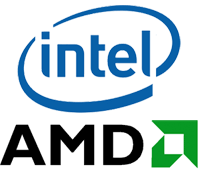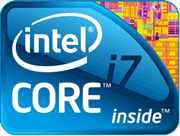 Dozens of companies that will be demonstrating their products at next week’s Consumer Electronics Show nominated themselves for the Last Gadget Standing competition. We judges whittled the contenders down to 25 semi-finalists. And now we’ve cut down that list to ten finalists who will get to show their stuff at our event at CES in Las Vegas next week. One of them will be…the last gadget standing.
Dozens of companies that will be demonstrating their products at next week’s Consumer Electronics Show nominated themselves for the Last Gadget Standing competition. We judges whittled the contenders down to 25 semi-finalists. And now we’ve cut down that list to ten finalists who will get to show their stuff at our event at CES in Las Vegas next week. One of them will be…the last gadget standing.
Tag Archives | Intel
Google TV: More Details This Week?
Remember that Google TV rumor from a couple of months ago, involving Google entering the living room in partnership with Intel, Sony, and Logitech? The FT’s Chris Nuttall expects it to get official this week. (He mentions Sony and Intel, but not Logitech–but I’ve heard that Logitech will have some sort of presence at the Google I|O developer conference which starts on Wednesday.)
One comment
It’s Inevitable: Google TV
 The New York Times’ Nick Bilton is reporting that Google, Intel, Sony, and Logitech are collaborating on a new platform for Internet-enabled TV called…Google TV, of course. Bilton doesn’t have a lot of detail, but he says that it’ll be an open-source platform that can run third-party apps; that it will include Google search; that it will run the Android OS and Chrome browser on Intel’s Atom processor; and that Logitech is working on remote controls, including one with a tiny QWERTY keyboard. Google has a prototype box, but the technology could be built into TVs; consumer products may arrive as soon as this summer.
The New York Times’ Nick Bilton is reporting that Google, Intel, Sony, and Logitech are collaborating on a new platform for Internet-enabled TV called…Google TV, of course. Bilton doesn’t have a lot of detail, but he says that it’ll be an open-source platform that can run third-party apps; that it will include Google search; that it will run the Android OS and Chrome browser on Intel’s Atom processor; and that Logitech is working on remote controls, including one with a tiny QWERTY keyboard. Google has a prototype box, but the technology could be built into TVs; consumer products may arrive as soon as this summer.
It would have been startling if Google didn’t try to something along these lines, given that TV remains one of the most important screens in the lives of millions of people, and one without any Google presence to date. And nobody’s figured out how to build an Internet TV platform that’s truly a breakout hit–even Apple, which famously keeps insisting that Apple TV is a mere hobby. Roku and Vudu are both pretty nifty, but neither is close to becoming a household name.
5 comments
5Words: Newegg Sells Fake Intel Processors?

Blockbuster CEO: time for…caution?
Ubisoft’s DRM servers fail spectacularly.
Chrome OS gets business edition?
Frameless, touch-keyboard Acer laptop?
Gizmodo tries HTC’s Legend handset.
Could iPad do handwriting recognition?
Techmeme launches media news site.
_______________________
Like 5Words? Subscribe via RSS.
No comments
The FTC Sues Intel
Last month, Intel and AMD settled their differences with an agreement that ended the long-running legal battle between the world’s largest CPU maker and its much smaller rival. Today, Intel is in hot water with an organization far more powerful than AMD: the Federal Trade Commission. The FTC is suing the company, accusing it of abusing its dominating market position to stifle competion. And the most interesting parts of the FTC’s list of complaints involve not CPUs but GPUs. Which is not a market that Intel controls in the least–Nvidia and AMD dominate discrete graphics, and Intel was recently forced to indefinitely delay its Larrabee GPU. But the FTC says that Intel makes it difficult for PC manufacturers to choose Nvidia or AMD graphics options by charging them higher prices for CPUs than if they opt for Intel’s less powerful integrated graphics.
Here’s Intel’s response to the suit, in which it says it was on the verge of a settlement with the FTC, and that it’s the victim of a rush to judgment.
I don’t know enough about the backstory to have an opinion of the specifics of the FTC’s charges, and I like free markets more than government interference, but this I know: Consumers benefit when there are multiple healthy competitors in a category. If PC manufacturers make technology decisions based primarily on fear of Intel–which is what the FTC claims–it’s not good for anybody except Intel.
2 comments
Intel’s New 48 Core Processor Won’t Change Your Life
Intel began sharing a programmable 48 core processor with researchers, according to reports published today. That is progress towards a future generation of computing, but don’t expect the technology to significantly impact your life for many more years to come.
The processor, which Intel calls a “single-chip cloud computer,” is about 20 times more powerful than Intel’s most powerful six and eight core processors that are available on the market today. It also provides that capacity while remaining energy efficient.
It might sound revolutionary, but it is just the evolutionary progression of the many-cores trend that has occurred over the past several years. Intel showed off its ability to design an 80 core chip in 2007, and very little has changed from the end user’s perspective over the past two years.
5 comments
Intel and AMD Declare a Truce of Sorts
 One of the longest-running, fiercest battles in tech isn’t exactly ending–but it’s sure entering a new phase. Today, Intel and AMD announced that they’ve reached a settlement that ends their legal wrangling (most notably AMD’s lawsuit against Intel for monopoly abuse), establishes a patent cross-licensing agreement, sets ground rules for how Intel can compete with AMD, and puts $1.25 billion of Intel’s money in AMD’s pockets.
One of the longest-running, fiercest battles in tech isn’t exactly ending–but it’s sure entering a new phase. Today, Intel and AMD announced that they’ve reached a settlement that ends their legal wrangling (most notably AMD’s lawsuit against Intel for monopoly abuse), establishes a patent cross-licensing agreement, sets ground rules for how Intel can compete with AMD, and puts $1.25 billion of Intel’s money in AMD’s pockets.
The agreement doesn’t end legal action against Intel by government officials, such as the EU’s $1.45 billion fine for abusive business practices (which Intel is appealing) or New York State’s recently-filed lawsuit.
For consumers, the major question about the settlement is pretty simple: Does it increase the likelihood of healthy competition between Intel and AMD, thereby driving greater chip innovation and lower prices so that we get the most PC possible for our money? We’ll see. But it’s fascinating to look at what Intel has agreed to refrain from doing, as reported by Cnet:
• Offering inducements to customers in exchange for their agreement to buy all of their microprocessor needs from Intel, whether on a geographic, market segment, or any other basis
• Offering inducements to customers in exchange for their agreement to limit or delay their purchase of microprocessors from AMD, whether on a geographic, market segment, or any other basis
• Offering inducements to customers in exchange for their agreement to limit their engagement with AMD or their promotion or distribution of products containing AMD microprocessors, whether on a geographic, channel, market segment, or any other basis
• Offering inducements to customers in exchange for their agreement to abstain from or delay their participation in AMD product launches, announcements, advertising, or other promotional activities
• Offering inducements to customers or others to delay or forebear in the development or release of computer systems or platforms containing AMD microprocessors, whether on a geographic, market segment, or any other basis
• Offering inducements to retailers or distributors to limit or delay their purchase or distribution of computer systems or platforms containing AMD microprocessors, whether on a geographic, market segment, or any other basis
• Withholding any benefit or threatening retaliation against anyone for their refusal to enter into a prohibited arrangement such as the ones listed above.
Basically, Intel’s agreeing not to take actions that would shut AMD out of dealing with major PC companies entirely, or hobble it so severely that it might as well be shut out. Sounds good to me. I wanna have the opportunity to choose between PCs based on a variety of processors from multiple companies.
Ultimately, AMD has always fared best when its portfolio of chips has been at its strongest in comparison to Intel’s offerings. Today’s agreement won’t have any immediate effect on its product lineup, of course. But if it increases the chances that a great AMD chip will get a great response from the industry, it would be…great.
2 comments
Please Sir, May I Have More Memory?
 Good news, maybe, sort of: Fudzilla is reporting that Intel will allow netbook manufacturers who use an upcoming version of its low-end Atom CPU to sell machines with 2GB of RAM rather than today’s artificial maximum of 1GB. That would allow for nicer, better-performing netbooks that don’t cost a whole lot more. Of course, it also begs the question: Why is Intel involved in deciding how much RAM a netbook can have in the first place? It’s a little as if the company that manufactured my home’s furnace wanted to be involved in deciding the capacity of my washing machine.
Good news, maybe, sort of: Fudzilla is reporting that Intel will allow netbook manufacturers who use an upcoming version of its low-end Atom CPU to sell machines with 2GB of RAM rather than today’s artificial maximum of 1GB. That would allow for nicer, better-performing netbooks that don’t cost a whole lot more. Of course, it also begs the question: Why is Intel involved in deciding how much RAM a netbook can have in the first place? It’s a little as if the company that manufactured my home’s furnace wanted to be involved in deciding the capacity of my washing machine.
The PC industry–even the parts of it who are selling tons of netbooks–have an amazing track record of disparaging the darn things and explaining why consumers don’t really want them. But some of the limitations of netbooks are manufactured: Both Intel and Microsoft impose restrictions on PC manufacturers that ensure that netbooks are less appealing than they might otherwise be, and therefore less imposing competition for more traditional, full-featured, profitable notebooks–ones that typically contain costlier Intel chips and run higher-priced versions of Windows.
Almost everyone in the computer industry would rather that consumers reject netbooks and buy somewhat more expensive, powerful thin-and-light notebooks with ultra-low voltage processors. And in many cases, those machines make a lot of sense. But wouldn’t it be nice if said consumers could choose between the best possible netbook and the best possible thin-and-light?
5 comments
Intel Unveils the Mobile Core i7 Processor
 While I’ve been at DEMOfall in San Diego, Intel has been holding its equally newsworthy Intel Developer Forum conference back in San Francisco. Today’s big announcement was the mobile version of the Core i7 quad-core CPU (code-named Clarksfield),as seen in such new laptops as Toshiba’s latest Qosmio. Laptop Magazine has benchmarked a Core i7 notebook provided to it by Intel, and found it to be smoking’ fast–but with iffy battery life. As usual, there’s a limit to the conclusions you can draw about a processor from tests of one computer–especially one supplied by the chipmaker in question. But as more machines ship from major manufacturers–including, eventually, Apple–expect some really powerful systems, starting at a relatively reasonable $1000 or so.
While I’ve been at DEMOfall in San Diego, Intel has been holding its equally newsworthy Intel Developer Forum conference back in San Francisco. Today’s big announcement was the mobile version of the Core i7 quad-core CPU (code-named Clarksfield),as seen in such new laptops as Toshiba’s latest Qosmio. Laptop Magazine has benchmarked a Core i7 notebook provided to it by Intel, and found it to be smoking’ fast–but with iffy battery life. As usual, there’s a limit to the conclusions you can draw about a processor from tests of one computer–especially one supplied by the chipmaker in question. But as more machines ship from major manufacturers–including, eventually, Apple–expect some really powerful systems, starting at a relatively reasonable $1000 or so.
One comment
Intel Cuts Solid State Disk Drive Prices
Intel increasing the performance of its X series of solid-state disks (SSDs), and is reducing its prices by as much as 60 percent, according to reports. The price cut, combined with increased capacity, could lead to SSD adoption in mainstream systems.
Unlike convention hard drives, SSDs contain no moving parts, and significantly reduce latency for data retrieval by behaving more like memory than a disk. They are often used in high-end laptops such as the MacBook Air, gaming PCs, and servers. However, they do use more energy, and have a finite lifespan.
Intel has shifted to a new manufacturing process that provides higher density data storage, compressing more data into chips. Consequently, its costs are lower, and it can pass some of the savings onto customers. A 80GB X series drive now costs 60 percent less than a year ago, and 160GB units are 47% less, according to CNET. The prices are $225 and $440, respectively.
Microsoft’s Windows 7 is optimized for SSD drives, and could help them become more common in mid-range consumer PCs over time. Pricing has been a significant factor in SSD adoption in notebooks, as price increases have wrought a corresponding decrease in sales.
As sales increase, Intel and other memory manufacturers will inevitably reach economies of scale, resulting in further reductions. Affordable, higher capacity SSD drives will arrive; it is just a matter of when.
